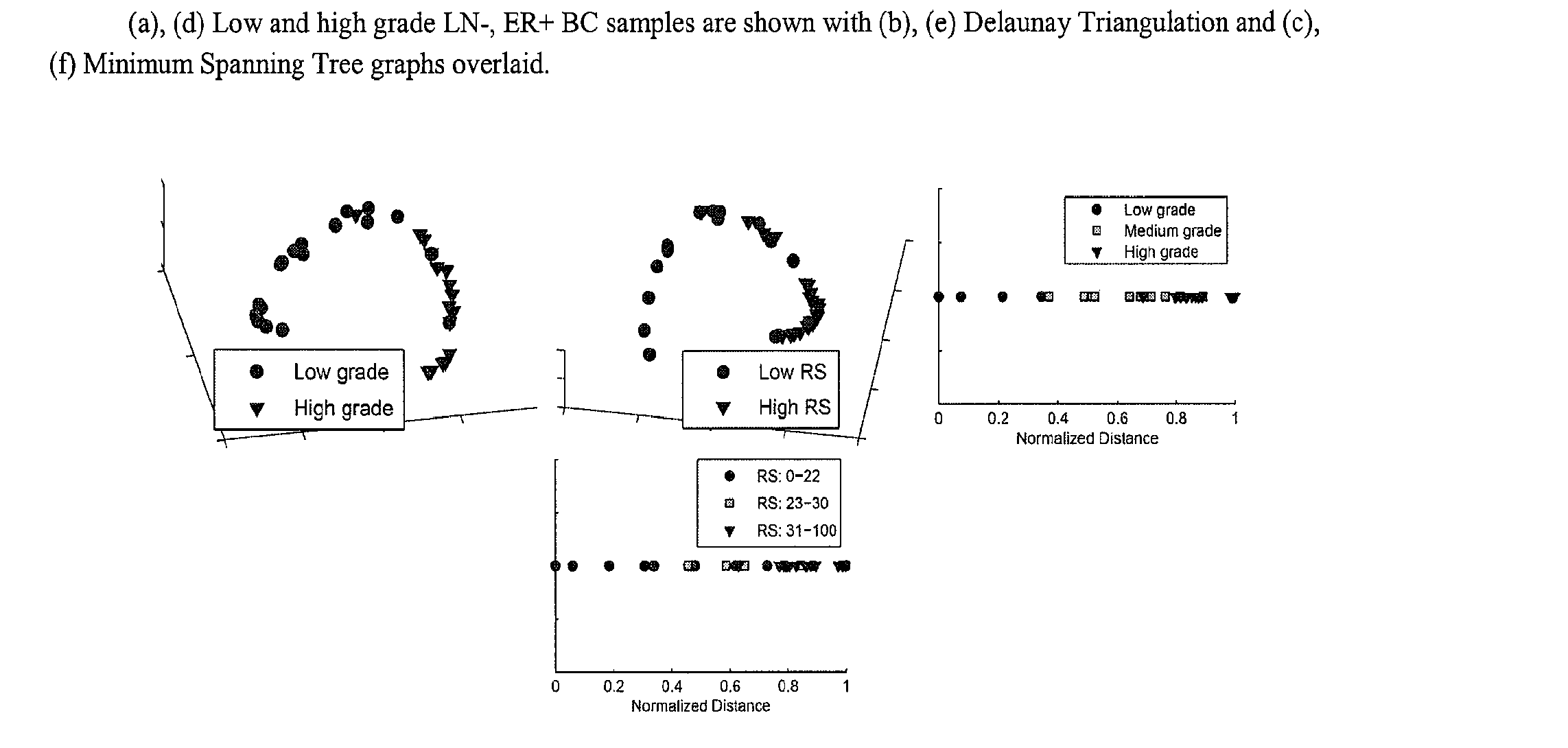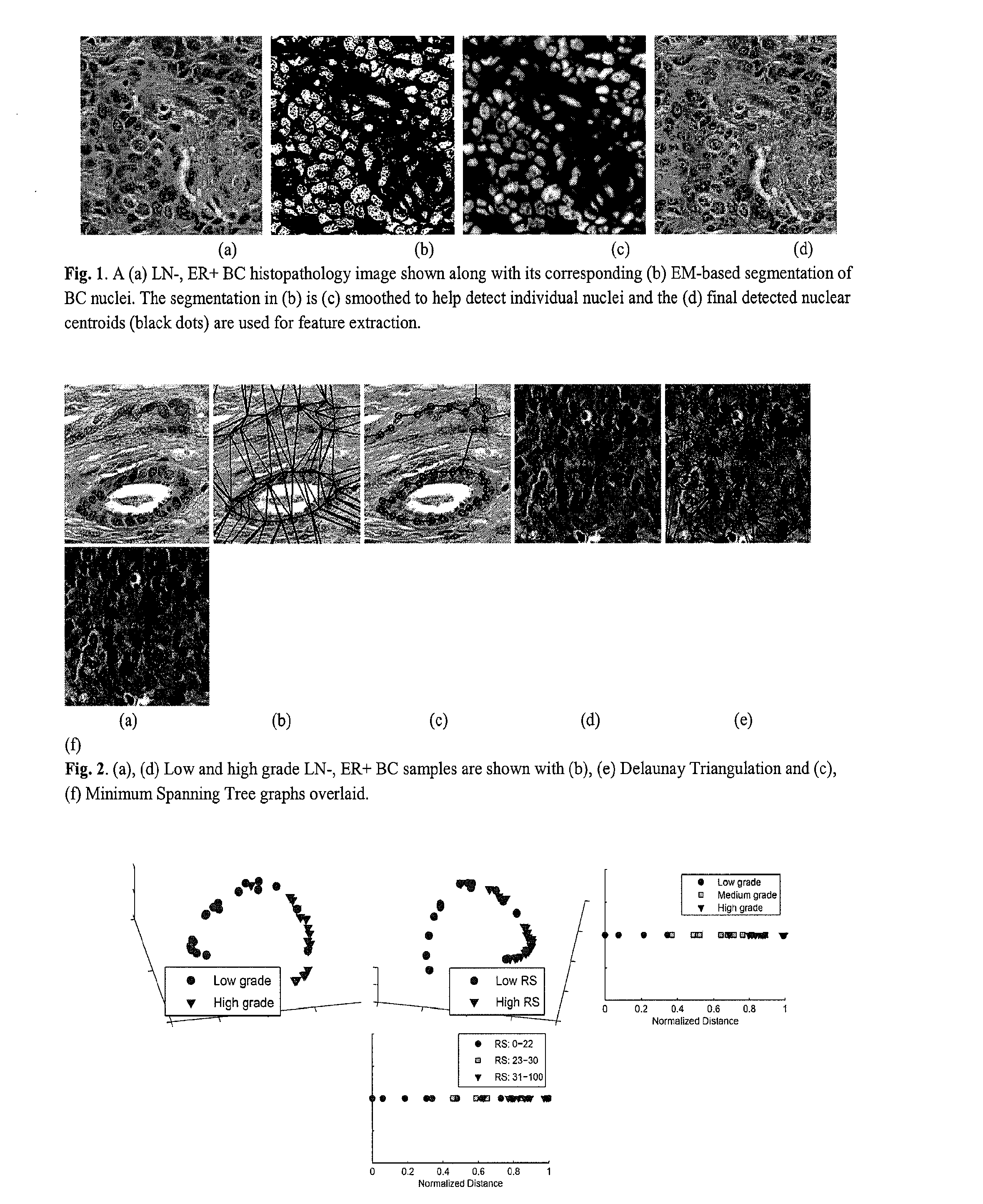Image-based risk score-a prognostic predictor of survival and outcome from digital histopathology
a risk score and digital histopathology technology, applied in image enhancement, image analysis, instruments, etc., can solve the problems of inability to accurately, efficiently and reproducibly automate image analysis tools, and the tedious and time-consuming process of manual detection of bc nuclei in histopathology, etc., to achieve the effect of long time and high cos
- Summary
- Abstract
- Description
- Claims
- Application Information
AI Technical Summary
Benefits of technology
Problems solved by technology
Method used
Image
Examples
exemplary embodiment 1
Automated Detection of Nuclei Using EM-Based Gaussian Mixture
[0046]The present invention relates to an image-based computer-aided prognosis (CAP) system and method that seeks to replicate the prognostic power of molecular assays in BC histopathology. Using only the tissue slide samples, a mechanism for digital slide scanning, and a computer, our image-based CAP system and method aims to overcome many of the drawbacks associated with Oncotype DX, including the high cost associated with the assay; limited laboratory facilities with specialized equipment, and length of time between biopsy and prognostic prediction.
Dataset
[0047]A total of 37 hematoxylin and eosin (H & E) stained breast histopathology images were collected from a cohort of 17 patients and scanned into a computer using a high resolution whole slide scanner at 20× optical magnification. For all methods, we define the data set Z={1, 2, . . . } of images, where an image =(, g) is a 2D set of pixels c∈ and g is the associate...
exemplary embodiment 2
[0061]The ability to automatically detect LI would be invaluable to BC pathologists and oncologists, since manual detection of individual lymphocyte nuclei in BC histopathology is a tedious and time-consuming process that is not feasible in the clinical setting. The availability of a computerized image analysis system and method for automated quantification of LI extent in HER2+ BC will enable development of an inexpensive image-based system for predicting disease survival and outcome.
[0062]An important prerequisite for extracting histopathological image attributes to model BC appearance is the ability to automatically detect and segment histological structures, including nuclei and glands. Consequently the ability of an image analysis system and method to grade the extent of LI in a BC histopathology image is dependent on the algorithm's ability to automatically detect lymphocytes. Automated lymphocyte detection, however, is a non-trivial task complicated by the intrinsic similarit...
PUM
 Login to View More
Login to View More Abstract
Description
Claims
Application Information
 Login to View More
Login to View More - R&D
- Intellectual Property
- Life Sciences
- Materials
- Tech Scout
- Unparalleled Data Quality
- Higher Quality Content
- 60% Fewer Hallucinations
Browse by: Latest US Patents, China's latest patents, Technical Efficacy Thesaurus, Application Domain, Technology Topic, Popular Technical Reports.
© 2025 PatSnap. All rights reserved.Legal|Privacy policy|Modern Slavery Act Transparency Statement|Sitemap|About US| Contact US: help@patsnap.com



